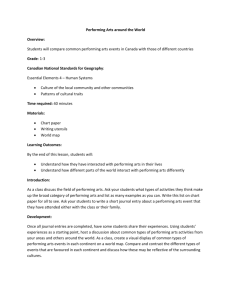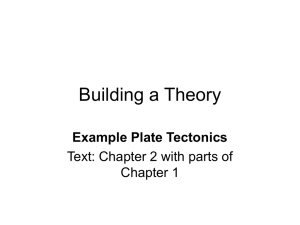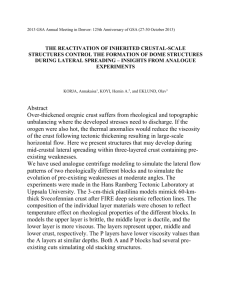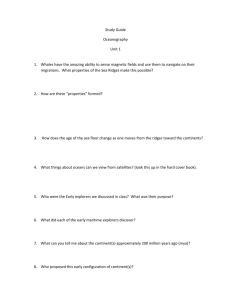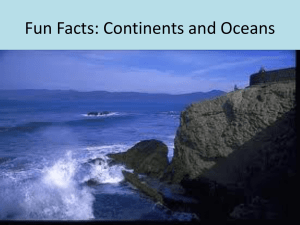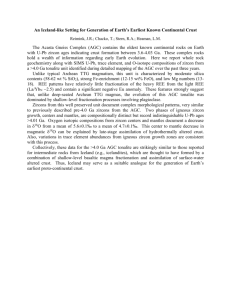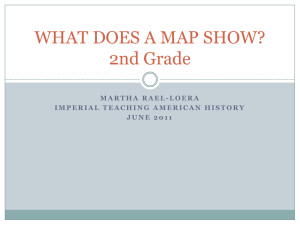File
advertisement
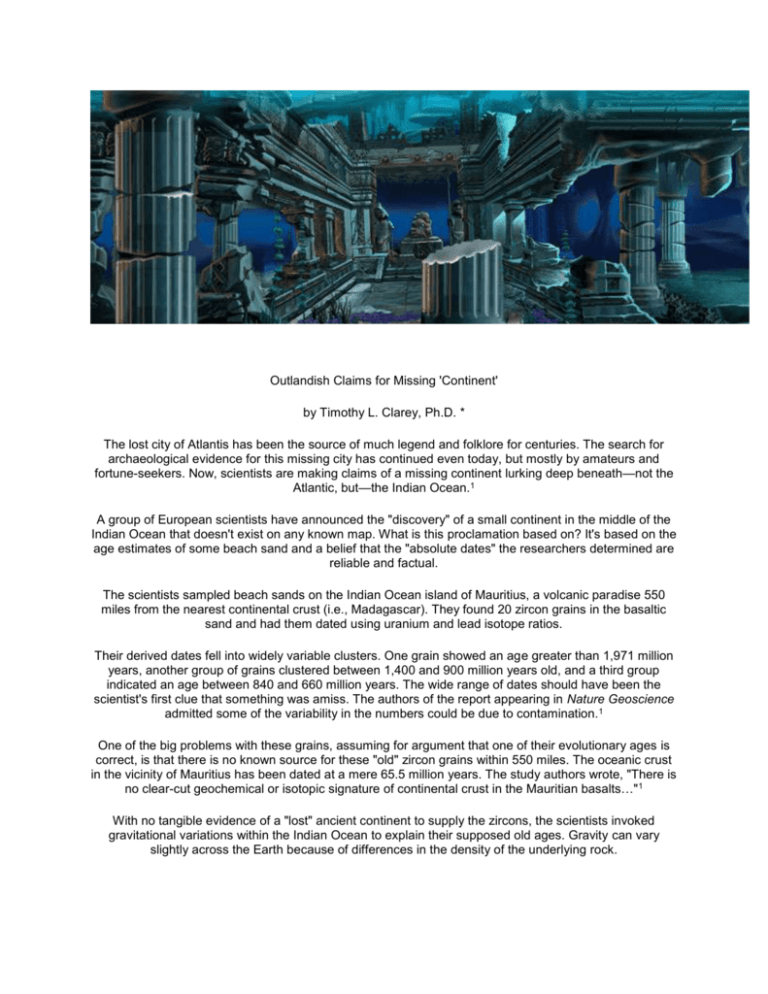
Outlandish Claims for Missing 'Continent' by Timothy L. Clarey, Ph.D. * The lost city of Atlantis has been the source of much legend and folklore for centuries. The search for archaeological evidence for this missing city has continued even today, but mostly by amateurs and fortune-seekers. Now, scientists are making claims of a missing continent lurking deep beneath—not the Atlantic, but—the Indian Ocean.1 A group of European scientists have announced the "discovery" of a small continent in the middle of the Indian Ocean that doesn't exist on any known map. What is this proclamation based on? It's based on the age estimates of some beach sand and a belief that the "absolute dates" the researchers determined are reliable and factual. The scientists sampled beach sands on the Indian Ocean island of Mauritius, a volcanic paradise 550 miles from the nearest continental crust (i.e., Madagascar). They found 20 zircon grains in the basaltic sand and had them dated using uranium and lead isotope ratios. Their derived dates fell into widely variable clusters. One grain showed an age greater than 1,971 million years, another group of grains clustered between 1,400 and 900 million years old, and a third group indicated an age between 840 and 660 million years. The wide range of dates should have been the scientist's first clue that something was amiss. The authors of the report appearing in Nature Geoscience admitted some of the variability in the numbers could be due to contamination. 1 One of the big problems with these grains, assuming for argument that one of their evolutionary ages is correct, is that there is no known source for these "old" zircon grains within 550 miles. The oceanic crust in the vicinity of Mauritius has been dated at a mere 65.5 million years. The study authors wrote, "There is no clear-cut geochemical or isotopic signature of continental crust in the Mauritian basalts…" 1 With no tangible evidence of a "lost" ancient continent to supply the zircons, the scientists invoked gravitational variations within the Indian Ocean to explain their supposed old ages. Gravity can vary slightly across the Earth because of differences in the density of the underlying rock. The study authors interpreted the gravity data to suggest a double-thickness crust depth beneath the island of Mauritius. They speculated that deeply submerged continental crust broke apart as the modern Indian Ocean formed, resulting in the thicker portion. However, this thickened area shows evidence of more extensive lava flows compared to most areas of sea floor crust. Plus, it resides near the Reunion Hotspot, similar to the thickened crust upon which the islands of Hawaii sit. The increased lava output from the hot spot could easily account for the thickened crust in the area. Thus, they are suggesting a "scientific" tale of a missing continent that mysteriously sank into the sea based primarily on out-of-place age dates. If the zircons had shown dates of 65.5 million years, there would be no suggestion of a missing continent. Scientific papers are supposed to be published for their merit, and include reasonable assumptions based on newfound data. This paper presented no concrete evidence for this presumed continent other than some out-of-place zircon age dates from a few handfuls of sand! Evolutionary scientists will not admit that their determined age dates are filled with errors and are often misleading. Instead, they hold on to these dates as fact, even to the point of telling a story of a long, lost continent. Reference 1. Torsvik, T. H., et al., 2013, A Precambrian microcontinent in the Indian Ocean. Nature Geoscience, 6 (1736): 223-227. *Dr. Timothy Clarey is Research Associate at the Institute for Creation Research. Article posted June 10, 2013
